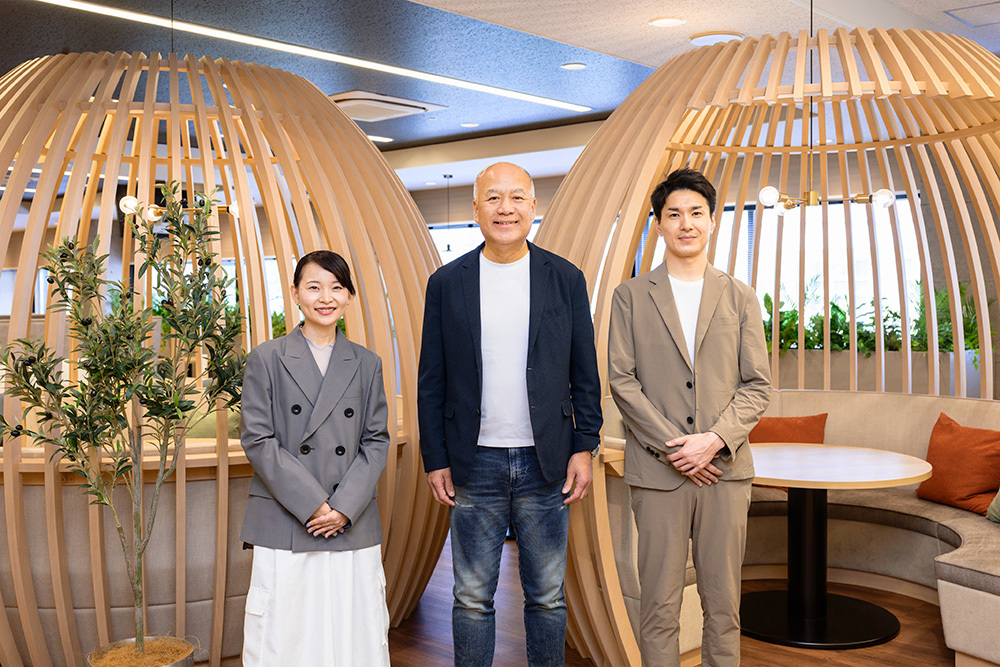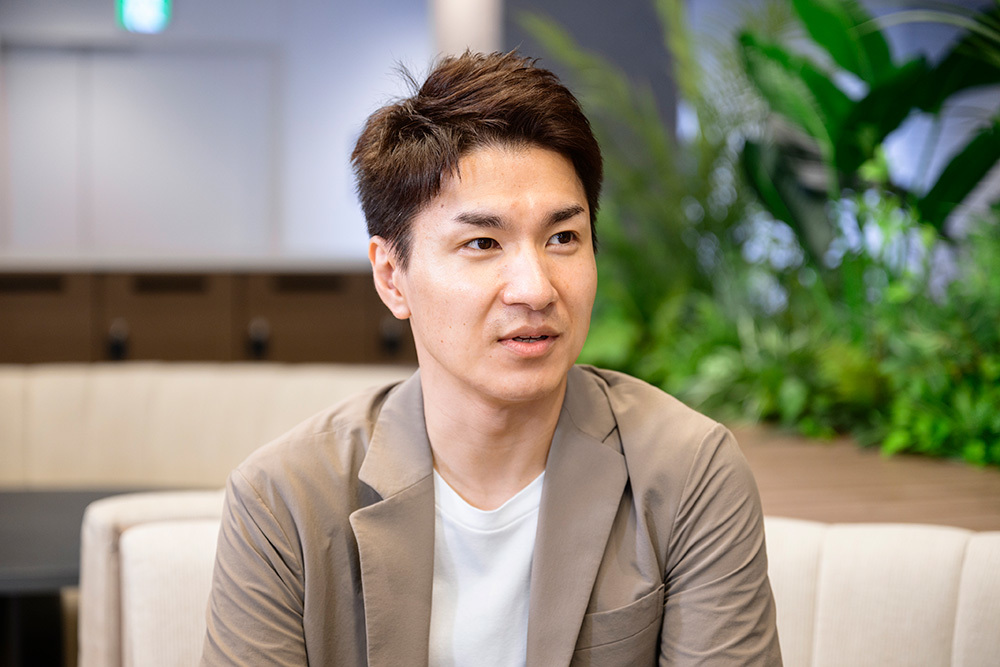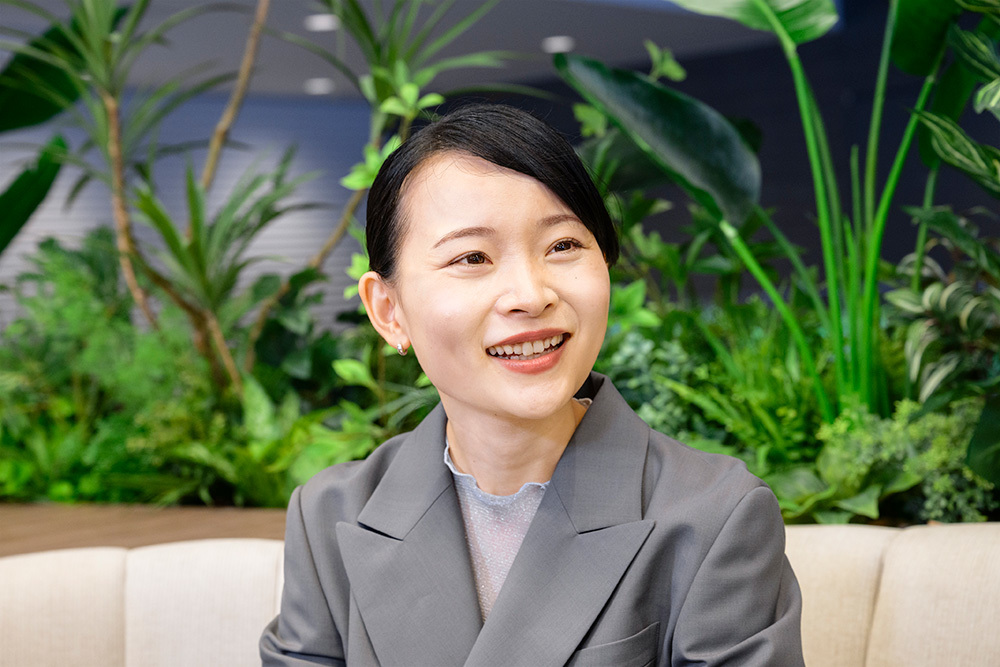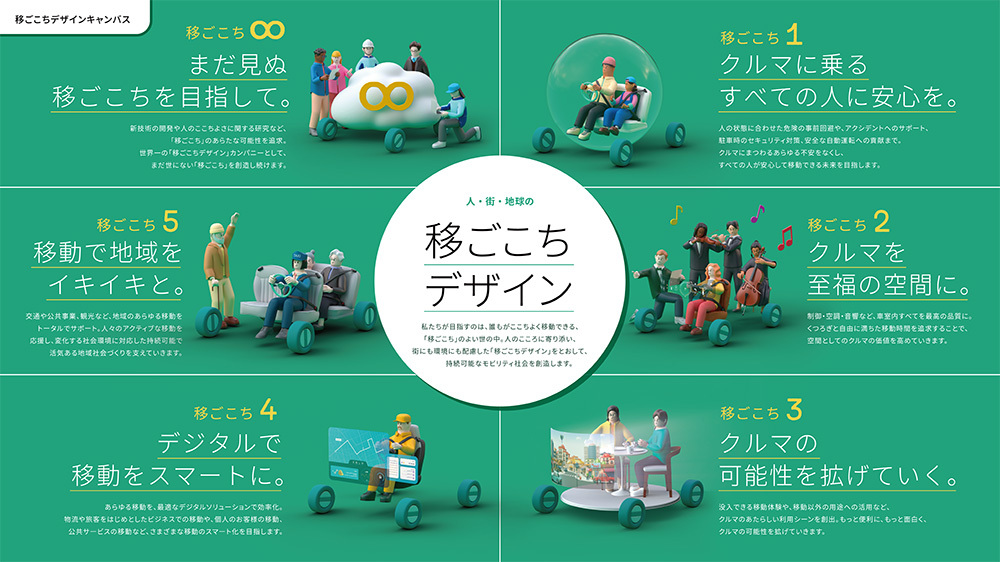This series delves into the essence of leadership by interviewing top executives who are dismantling all biases and driving business transformation within their companies as architects.
This installment features Mr. Masashi Nagayasu, President and Representative Director of Panasonic Automotive Systems. Established in 2022 following the Panasonic Group's transition to a holding company structure, the company specializes in mobility services, continuously delivering new value to the "car travel experience."
In 2024, it formulated its vision to become the world's leading "mobility experience design" company. Dentsu Inc.'s Yuichiro Takoshi and Marie Kobayashi, who partner with Panasonic in its transformation, interviewed Mr. Nagai about the background of this vision development and his thoughts on it.

(From left) Dentsu Inc.: Marie Kobayashi, Panasonic Automotive Systems: President Masashi Nagayasu, Dentsu Inc.: Yuichiro Tashuku
Strategic management investment to prevail in this "once-in-a-century" period of profound transformation
Takoshi: We've been working together with your company for over a year and a half. First, could you tell us about your company's overview?
Nagae: We were established as a Panasonic operating company in 2022. Our mission is "to create a sustainable mobility society for a better life for everyone." We globally deploy diverse in-vehicle systems—including car navigation, display audio, and electronic mirrors—providing safe and comfortable mobility experiences to automakers worldwide.
Takou: When I think of your company, the carve-out from the Panasonic Group announced in November 2023 stands out. What was the background behind that decision?
Nagae: The automotive industry is currently undergoing a period of profound transformation, often described as a "once-in-a-century" shift. Technological development in areas like electrification and autonomous driving is accelerating rapidly, and the pace of innovation is intensifying competition. To succeed in this environment, it is essential for us to leverage our core strengths and strategically invest in areas where we can compete effectively.

Over its 100-year history, Panasonic has continually adapted its business portfolio to the times. As a company, we constantly reassess where and how much capital to allocate—this "capital allocation" applies equally to our automotive business. While we have established a solid global position in automotive components, particularly in cockpit systems, within the Group's overall capital strategy, this area was not deemed a priority for further investment.
However, we believe this field still holds significant growth potential. That's precisely why we need to actively pursue investment through our own will and capabilities. To realize this, we saw 2024 as the right timing to form a partnership with Apollo Fund and aim for growth as an independent entity.
Takako: From the perspective of the entire Panasonic Group, it's a strategic decision regarding capital allocation. However, from your company's perspective, it means establishing a structure to raise capital independently and invest in growth areas. I felt this was a positive development, expanding the possibilities for growth and transformation.
The Significance of Aiming to Be the World's Leading "Comfort of Movement Design" Company
Takoshi: You consulted us during your vision development and ultimately adopted the vision of becoming the world's leading "mobility experience design" company. What led you to seek our advice?
Nagae: Actually, when we established the company in 2022, we set both a mission and a vision. However, the vision ended up being quite lengthy because we wanted to include so many diverse elements. Ideally, a vision should be easily understood by everyone, so we wanted to express it in a single phrase or word, which is why we consulted you.
Kobayashi: When reviewing the original vision for the new one, the phrase "with love" really stood out. I'd love to hear the background behind President Nagae including "love" in the vision.
Nagae: I think my experiences when I was young influenced that. I was assigned overseas for the first time at age 27, working as a section chief. Within a month, all my local subordinates quit. Since I'd been a regular employee in Japan, I was pretty cocky back then (laughs) and didn't think much of it. But a supervisor I respected got incredibly angry and told me, "You have no love!" He instructed me, "In a supervisor-subordinate relationship, you sometimes have to be strict, but there must always be love behind it. Otherwise, you can't build trust." His words stayed with me ever since, and I believe "love" is a word I truly want to cherish.
Kobayashi: That's an unexpected story coming from you now. Beyond President Nagayasu's emphasis on "love," I also sensed your company's character in the emotional keywords like "gratitude," "smiles," and "heartfelt encounters" I saw in the materials you referenced during vision creation.
Nagae: Konosuke Matsushita, Panasonic's founder, believed a company's role was to fulfill people's desire for "a more abundant life." It's precisely because that conviction is at our core that Panasonic has developed so many businesses closely aligned with people and their lives. So, perhaps the idea of valuing "people" and "emotions" naturally grew from that.
When I make decisions, I try to use the criterion of "whether someone can be happy" rather than just profit and loss. Of course, logic is important in business, but I also want to be honest with my own heart and feelings.
Kobayashi: That's exactly why we wanted to reflect your vision and the company's values in our vision statement. We contemplated how to articulate your company's stance of "being close to people's hearts" as a value, and that's how we proposed the term "emotional comfort." Looking at your product lineup, it's clear you don't just focus on specs; you create products that consider the user's emotions and daily life. I felt that it's precisely because you stay close to the "heart" that you can reach the value of "comfort," which is why I expressed it as "igokochi." When I proposed the keyword "igokochi design," you said, "That's it!"
Nagae: It really hit home! I thought it was brilliant. It felt like you captured in one phrase the value we can offer by leveraging our backbone and greatest strength: our attitude and heart of being close to people.
Also, the word "design" was perfect. We've always been a company selling "things," but it struck me that we could also sell the "experiences" born from comfortable mobility spaces. It really resonated as a word that could encompass all of that.
Kobayashi: Thank you. The "design" part involved proposing alternatives like "creation" and having extensive discussions with employees about which verb best represented our company. Ultimately, we decided on "design" because it embodies the idea of creating things centered around people. This was truly a co-creation with everyone.
Takou: We wanted to develop a phrase that made it easy for employees to say, "This is what we do." At first glance, since your company is B2B, it's easy to think in terms of technology. However, as we developed the vision, we felt you were looking beyond just advanced technology and performance, toward the smiles and heartfelt encounters that come next. It's a vision we were also able to build with confidence.
Nagae: It's true, we'd been discussing "What kind of company are we?" for quite some time. Having you propose the vision and enabling us to share the common understanding that "We are a 'Relocation Experience Design' company" was truly wonderful.
As an aside, after finalizing the vision, we also produced an introductory video for "Comfort of Movement Design," didn't we? We've been screening this video repeatedly at exhibitions, and several executives from automotive manufacturers have seen it. One of them remarked, "This is the kind of initiative we wanted to pursue ourselves." Additionally, a manufacturer's president expressed resonance with the term "Comfort of Movement" rather than just "comfort." We feel a tangible sense that our message is truly reaching industry stakeholders.
"Mobility Experience Design" also contributes to solving social issues
Takou: Alongside vision development, we also created the "Comfort of Movement Design Canvas," which distills the value your company designs to provide into five key points plus an "infinite" concept, totaling six elements. I feel this canvas truly embodies the collective wisdom of your business division, and I think it's excellent. We also publish the canvas and content derived from it on our owned media platform, the Comfort of Movement Design Studio, which we developed simultaneously.
Nagae: I believe the Moving Experience Design Canvas has heightened employees' understanding of "Moving Experience Design." It makes it clear how their specific business, products, or technologies connect to developing which aspects of the "Moving Experience."
What struck me when I saw this canvas is that "mobility comfort" itself connects to solving societal challenges. People inevitably move, yet the current reality involves significant stress and anxiety. Issues surrounding mobility, including challenges like declining birthrates, aging populations, and insufficient transportation options, will only grow more severe. This is a global societal challenge, not just one for Japan.
Our company's mission is "to create a sustainable mobility society." That's precisely why we must build a society where everyone can move with peace of mind, freedom, and comfort. Seeing this canvas made me realize anew that this is exactly what I've been seeking.
< To be continued in Part 2 >















